I sit in the powerful, high altitude sun on the remnants of an ancient stone wall in a high valley in Hemis National Park, Ladakh, India. Around us in every direction spectacular snow-covered mountains stand strikingly against deep blue skies. One of our spotters tells us they saw a snow leopard in the rocks near the top of a 15,000 foot ridge above us. He tells us it will eventually get up, so we wait, for 3 hours. Giant scavenging birds soar overhead, surveying the scene, as the leopard had killed a blue sheep in a ravine across from us- but a golden eagle had dominated the carcass for the entire day. Around 4:30pm our group explodes with the excitement as we see a graceful, ghostly creature stand up, stretch, and begin to climb the steep slope to a jagged spine of rock, where it stood silhouetted against the sky, its dramatically long tail whipping up and down as it surveyed its vast kingdom. My eyes fill with tears as one of my greatest life-long fantasies transforms into the most magical wildlife sighting in my life. I was staring at a wild snow leopard- the mountain ghost.
I have had a special, nagging obsession with seeing a snow leopard in the wild since I read the fantastic book “The Snow Leopard” by Peter Matthiessen over 20 years ago. After finishing the book I reserved a flight to India for a 3 month solo backpacking trip throughout India, which included a month in the Himalayas. I will never forget finding fresh snow leopard scat in a hanging valley at 15,000 feet as I backpacked to 16,200 foot Goecha La Pass in Kanchenjunga National Park. I knew that spotting a snow leopard was something I would never achieve, but just to be in snow leopard country was a thrill I would never forget.
This past fall I accompanied my great Tibetan friend Chengan He (Phillip), who I guide Nathab China Expeditions with, to Qinghai Province in search of snow leopards. It was here that we stood an excellent chance of seeing snow leopards, and found many sets of very fresh tracks, but failed to see a cat. Our local guide did see one, but it disappeared by the time we caught up with him. It was a fantastic adventure nonetheless, with amazing wildlife sightings, and I will return with him in the future to try again. Right now the populations of snow leopards and other wildlife, such as pallas cats, Tibetan foxes, wolves, brown bears, wild yak, blue sheep, wild ass and Chiru are abundant in Qinghai Province.
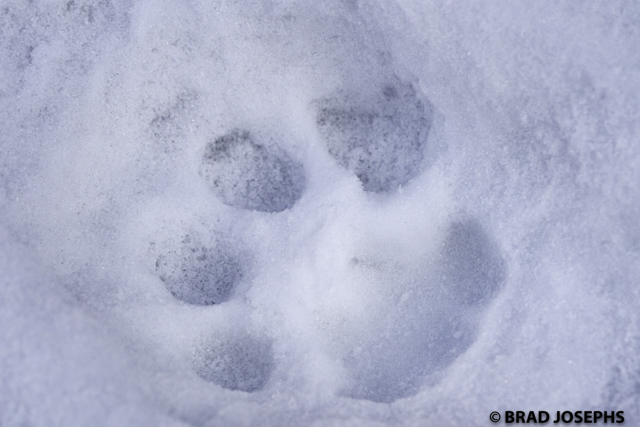
It was an amazing thrill to find many sets of fresh snow leopard tracks, only hours old, on the 15,000 foot Qinghai Tibetan Plateau in Northwest China in November.
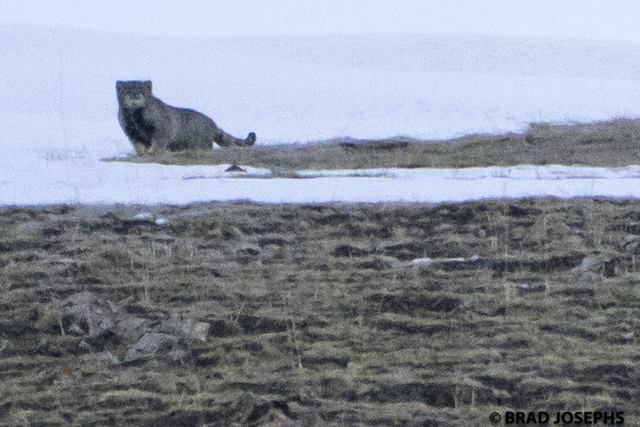
Pallas cat in Qinghai Province. It is actually more difficult to see these cats in the wild than snow leopards.
I was asked this winter to help develop and lead snow leopard expeditions in Ladakh, India by conservationist Behzad Larry. I just returned from 3 weeks with Behzad, who helped me fulfill my fantasy of seeing a snow leopard in the wild. This was the only time I was brought to tears by a wildlife sighting. The thrill of seeing such a mysterious, beautiful, phantom-like creature navigate a snowy, rocky ridge, after decades of dreaming about them, was intense.
The snow leopard is a classic example of an umbrella species, which is a species that have either large habitat needs or other requirements whose conservation results in many other species being conserved at the ecosystem or landscape level. When that species is charismatic, such as the giant panda, polar bear, tiger, or snow leopard, it is easy to gain support from humans who want to conserve their wild populations. As measures are taken to save these flagship species in the wild, entire ecosystems are protected. The World Wildlife Fund uses charismatic umbrella species around the world to gain support and funding to conserve the animals the world loves, as well as their respective ecosystems. Just as the giant panda encourages us to help protect the bamboo forests of China, the polar bear encourages us to fight global warming, the orangutan drives us to fight deforestation in Borneo, the beauty and mystery of the snow leopard draws conservation efforts to the Himalayas.
One of my mantras through my career is that ecotourism can either save or ruin a species, depending on how it is done. In developing areas of the world, especially in Asia, responsible tourism is key for wildlife conservation. When people are fighting for survival in economically challenged regions, species and ecosystems must have economic value to ensure their protection. As I work with many different endangered wildlife habitats in Asia, I study and critique the benefits versus the damage that tourism is causing to the wildlife. On my recent expedition in Hemis National Park in Ladakh, India, I found the perfect model of conservation through tourism. I found a magical kingdom where the snow leopards are conserved and worshipped by the locals, because they make up a bulk of their livelihood. In Hemis National Park, the snow leopard is the provider.
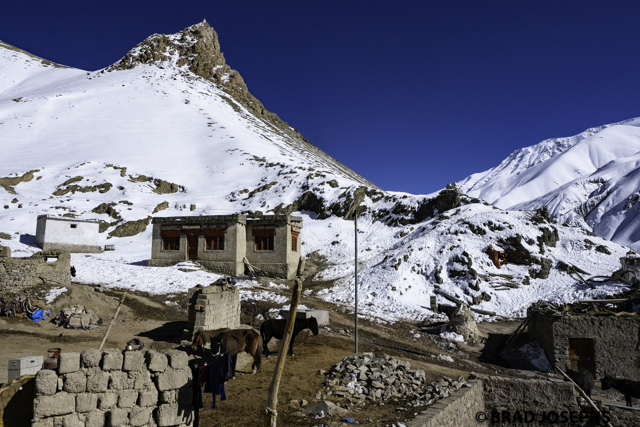
Several tiny villages, such as Rumbak, exist within Hemis National Park. only accessible by foot, they are embedded deep in prime snow leopard habitat. Residents benefit from the hardy wildlife enthusiats who venture here in search of snow leopards.
Visitors must hike about 3 miles into Hemis N.P. to their accommodations, which are either tent camps or a few homestays with villagers, with gear brought in with horses and mules. Our trip is based out of a very nice tent camp, with private, luxury tents that have propane heaters, and a large, heated communal tent where we would hang out and eat our delicious meals. Even though there were only 4 people in our group, the camp employed 12 locals as porters, cooks, and wildlife trackers. The latter is the key to the 100 percent success rate of snow leopard sightings in the last 4 years. Each group hires two trained, expert local spotters who spend all day every day searching the mountains with Swarovski Scopes for wildlife. During our stay, there were around 10 spotter/trackers all sharing information with each other by radio to help ensure every visitor sees a snow leopard as well as tibetan wolves, lynx, golden eagles, foxes, blue sheep and other wildlife.
The Hemis model is perfect for a number of reasons. Firstly, the locals are happy because all of the camp staff, spotters, porters, and horsemen are locals who live inside the park. This source of employment more than makes up for the limited agriculture and grazing that is allowed. There are a few fields which produce highland barley and vegetables in the summer, and a few yaks, but this so limited it doesn’t interfere with the wildlife and the habitat. Livestock does not overgraze and compete with the ungulate prey base of the snow leopards, which is key. All of the park fees that visitors pay during their visit goes into a communal pool which funds projects that benefit the locals, such as a solar power station, and fencing to protect cultivated fields from wild animals. Visiting the park directly funds infrastructure improvements which help the residents coexist with wildlife without conflict. Lastly, there is a 50 visitor limit inside the park during the winter snow leopard season, so there is very little disturbance from tourism.
This was in contrast to my experience in Qinghai Province where there is very little infrastructure set up for conservation based tourism. The residents in snow leopard habitat are dependent on income from herding yaks and sheep (which severely over-browse habitat, and limit populations of snow leopard prey). The residents do not want to kill leopards because of their Bhudhhist beliefs, and fear of persecution from the Government since they are protected species, but there is a staggering amount of depredation of livestock by snow leopards, wolves and brown bears, which can cause families to face serious economic losses. We met one family of nomadic yak herders who had lost 10 yaks to predators in one year. This inevitably results in retribution killing of these predators by desperate families. Rumor has it that all of the snow leopards in the film “Born In China” have been recently killed for this reason. I was told that in the last 10 years there has only been one domestic animal killed by a snow leopard in Hemis National park. My goal is to learn from the Hemis NP Model of conservation, help it succeed, and encourage other regions to adopt similar programs. In an upcoming post I will outline the ground breaking research on snow leopards and other wildlife that is happening in Hemis National Park. Stay Tuned!
Here is a detailed explanation of how snow leopard tourism works, and protects snow leopards in Hemis National Park, Ladakh by conservationist Behzad Larry.
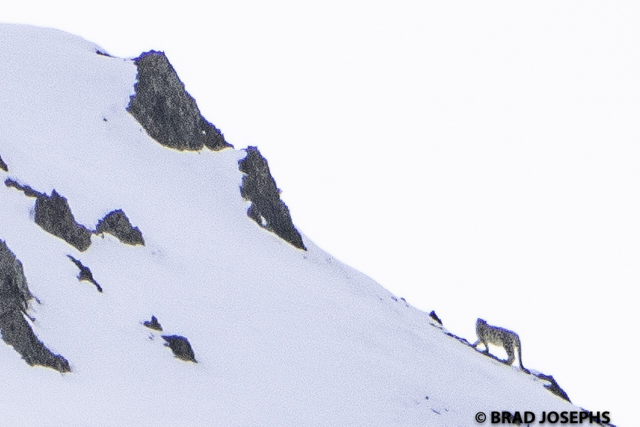
We watched this female traverse the ridge tops for over a mile, stopping to mark her scent numerous times, as March is mating season for the snow leopard.
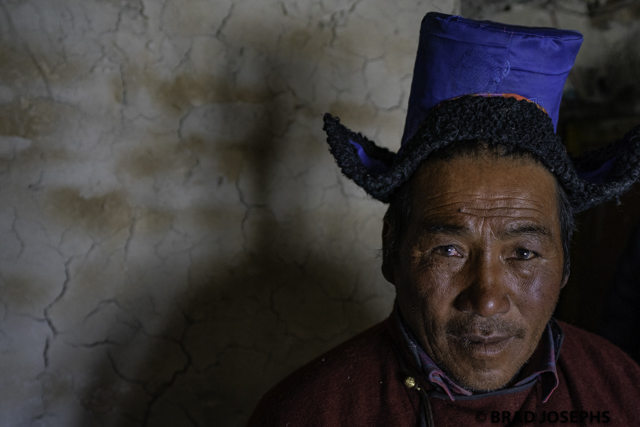
This was our horseman, who brought in our gear to our base camp. He invited us to his home for lunch one afternoon.
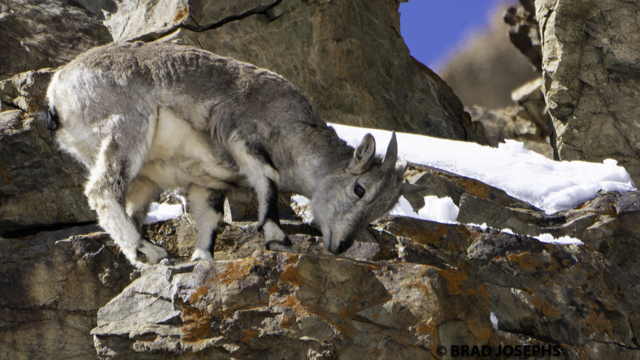
It was amazing to see such high populations of blue sheep, the favorite prey of snow leopards, in such a harsh high desert environment. Abundant snow leopard prey is key to healthy snow leopard populations.

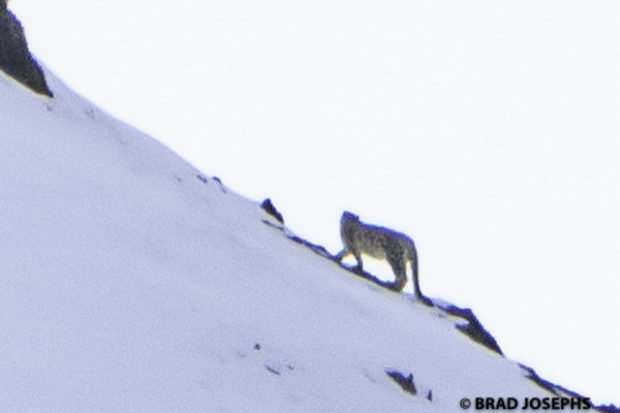
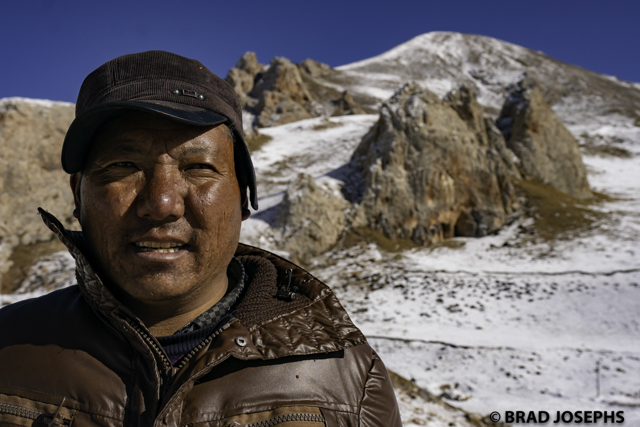
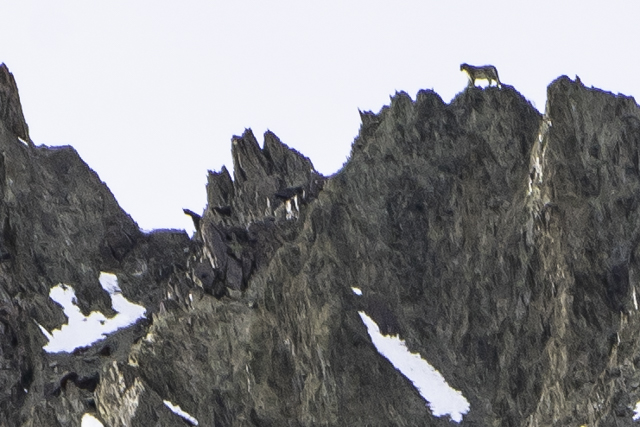
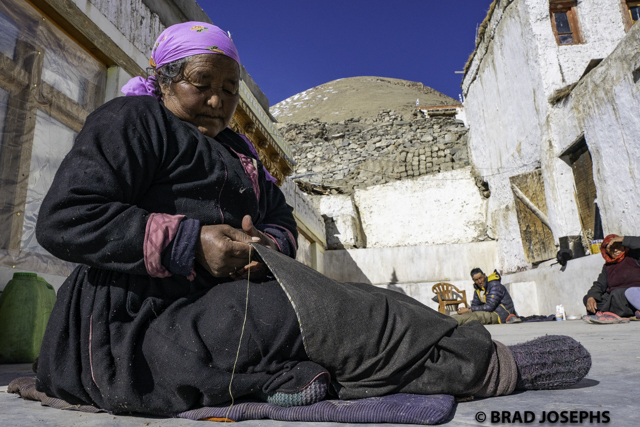
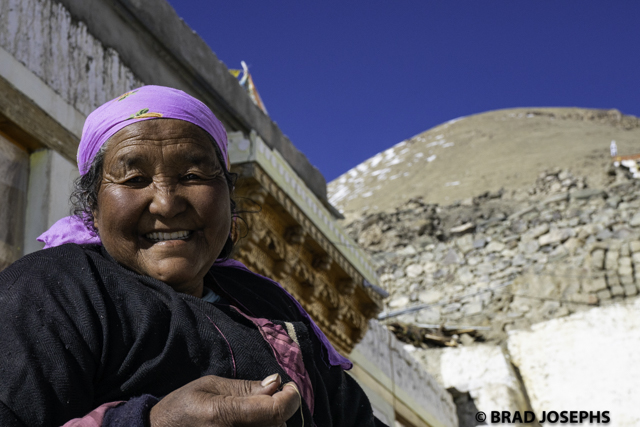
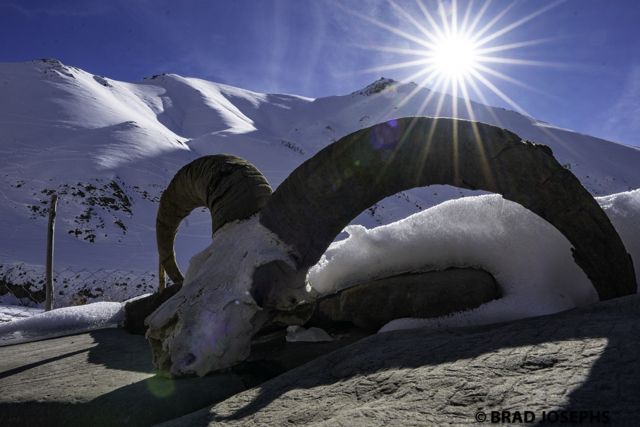
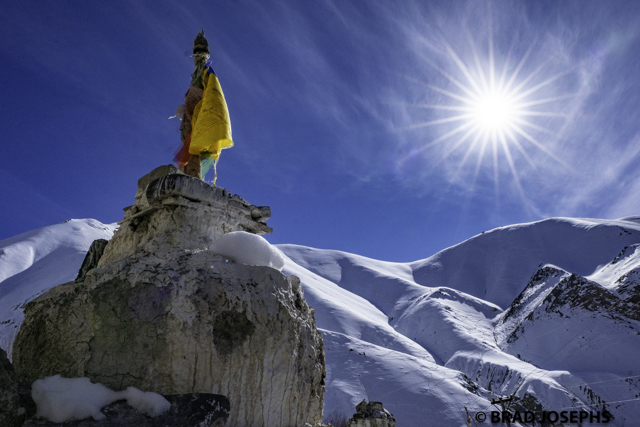
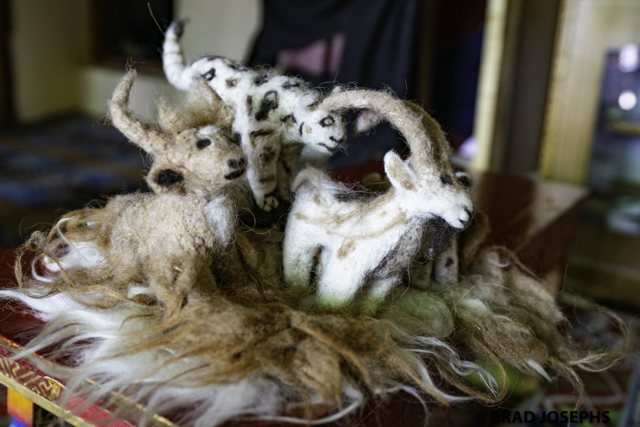
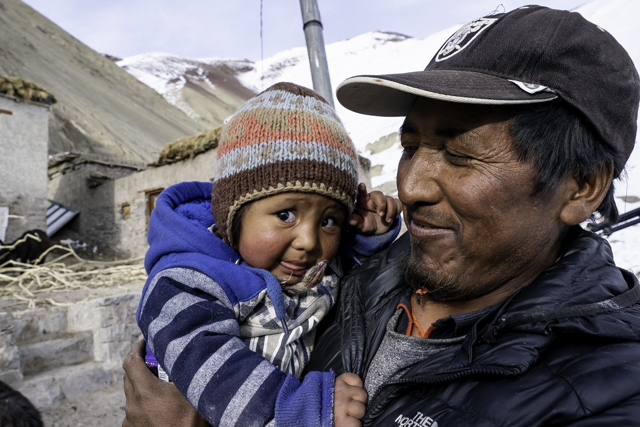
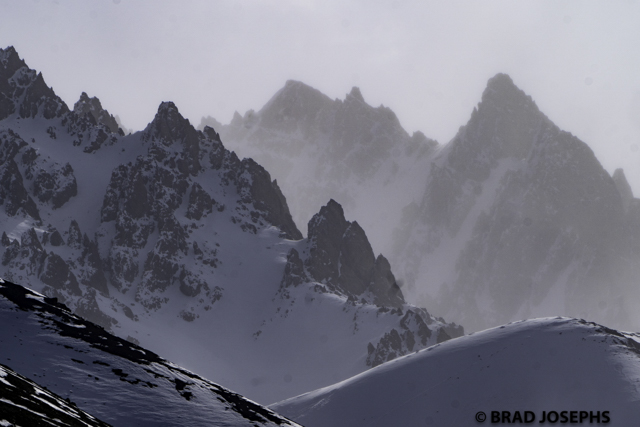
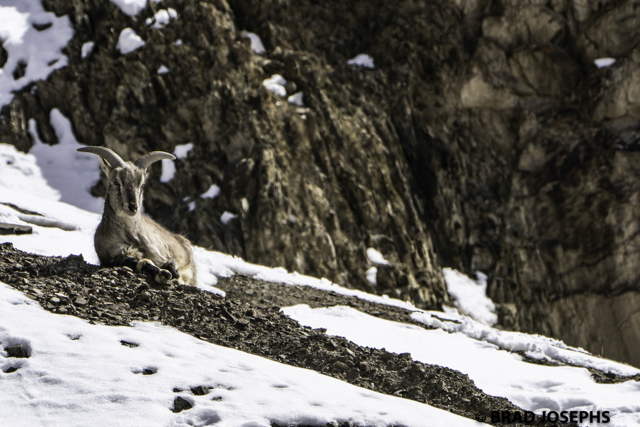
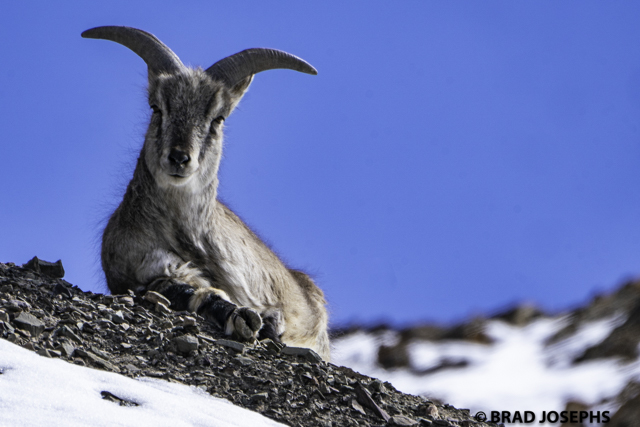
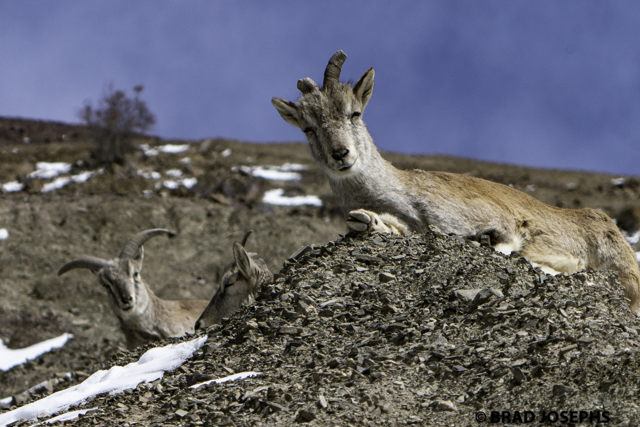
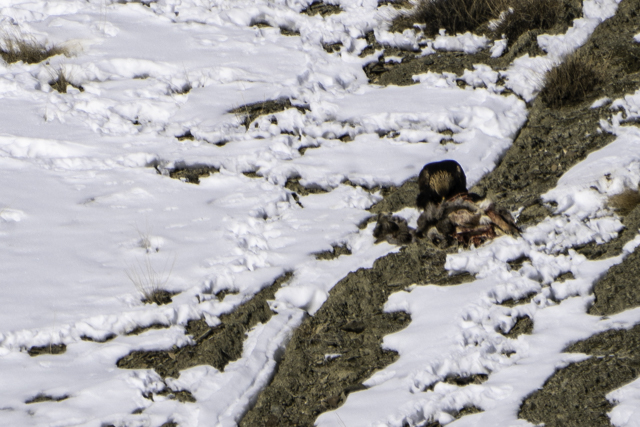
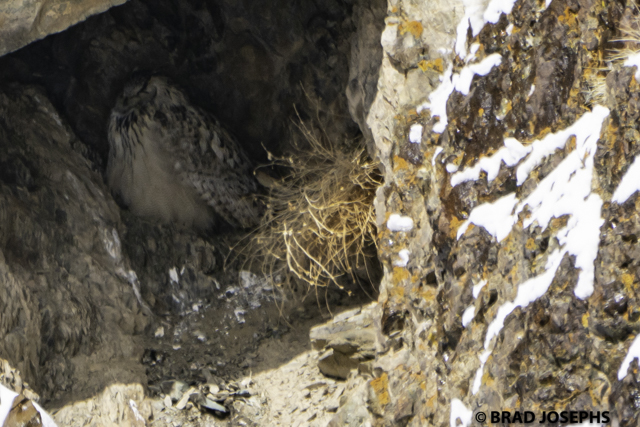

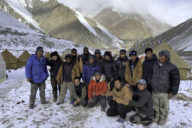
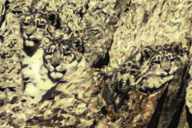
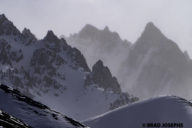
5 Comments
THANK YOU !!
What an experience! You share it beautifully ! I do not remember which trip to Churchill you were my guide-but I am glad you were. I am sorry I never made it to Alaska, but I am certainly enjoying your travels now. I a couple of weeks I will be 91 so gave my gear away about 6 years ago after my last Safari with Boyd and one more trip to Churchill. I hope you are able to keep going as long as I did. Just keep the postings coming! Good health and Good travels!!
WOW!!!!
So glad you filled your bucket list at an early age!! What a fantastic experience! I’m so happy for you! Keep on trekking in good health for many years to come!
Once again Brad such a descriptive and awesome post. Can’t help feel that one was there. Beautifully written and congrates to you. Couldn’t be more happy for you. Cheers !
REALLY enjoyed this Brad! Keep you words and photos coming! Thank you!
Brad, I really enjoyed reading about your experiences searching out the majestic snow leopard. Your photos were significant, since I have never traveled in that part of the world. Thank you so much for sharing.